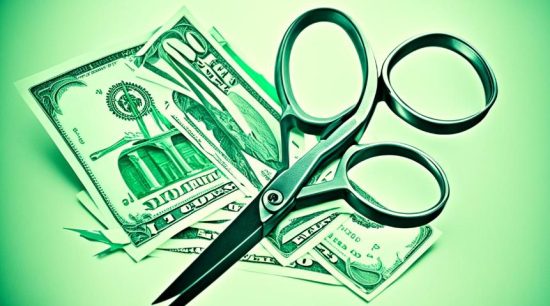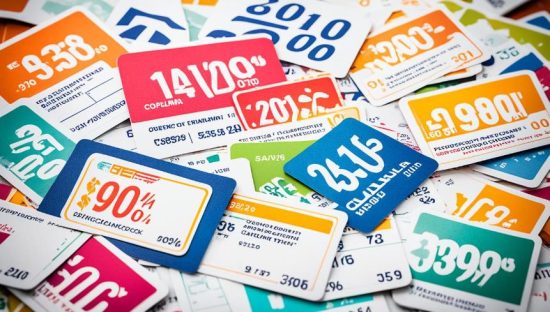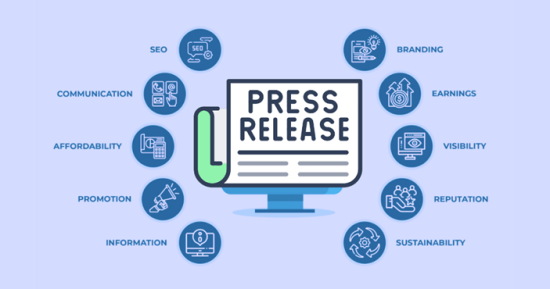
Living paycheck to paycheck is a common challenge for many Americans, but there are effective strategies to save money and build financial security. These include cutting expenses, reducing grocery and utility costs, finding ways to boost income, and making small but impactful changes to financial habits. By adopting these strategies, even those with limited resources can break free from the paycheck-to-paycheck cycle and work towards a more stable financial future
What does living paycheck to paycheck mean?
Living paycheck to paycheck is a financial situation that many individuals find themselves in. It refers to a cycle where your income is just enough to cover your immediate expenses, without any savings or financial stability. When you live paycheck to paycheck, each paycheck is used to meet your basic needs such as housing, utilities, groceries, and transportation, with little to no room for unexpected expenses or long-term goals.
How to Save Money When You Live Paycheck to Paycheck?

When living paycheck to paycheck, saving money requires strategic budgeting and expense management. Begin by creating a thorough budget that accurately reflects your income and expenditures. Analyze your spending habits to identify areas where you can reduce costs, such as renegotiating bills, eliminating unnecessary expenses, and utilizing discounts or coupons for groceries. Lowering utility bills through energy conservation and exploring alternative energy sources can also contribute to savings. Additionally, evaluate transportation needs and consider cost-effective options like public transit or carpooling. Read the best savings building tips and easy ways.
Reducing Monthly Bills and Expenses
Here are some practical tips to help you lower your monthly bills and expenses:
- Review Your Contracts and Subscriptions: Take the time to go through your contracts and subscriptions and identify any unnecessary or unused services. Canceling or renegotiating these agreements can lead to significant savings. For example, if you have multiple streaming subscriptions, consider keeping only the ones you truly use and enjoy.
- Cut Back on Non-Essential Services: Evaluate your discretionary spending and identify areas where you can cut back. This could include dining out less frequently, reducing entertainment expenses, or finding more affordable alternatives for hobbies and activities.
- Save on Insurance Premiums: Shop around for insurance policies and compare quotes from different providers to ensure you’re getting the best rates. You can also consider increasing your deductibles or bundling multiple insurance policies to save on premiums.
- Consider Energy-Saving Measures: Take steps to lower your energy bills by implementing energy-efficient practices and investing in energy-saving appliances. Simple actions like turning off lights when not in use or using a programmable thermostat can make a noticeable difference in your monthly expenses.
Tips for Cutting Grocery Spending
When it comes to saving money and stretching your budget, reducing grocery spending can have a significant impact. By implementing effective strategies for meal planning, taking advantage of shopping deals and couponing, and reducing food waste at home, you can make a significant dent in your grocery expenses.
Effective Meal Planning Strategies
Meal planning is a key technique for optimizing grocery spending. By creating a weekly meal plan, you can avoid impulse purchases and only buy what you actually need. Start by assessing your pantry and fridge to identify ingredients you already have. Then, plan your meals around these items to minimize waste and make the most of what you already have on hand. Additionally, make a shopping list based on your meal plan and stick to it when you go shopping. This will help you avoid unnecessary purchases and stay focused on the essentials.
Shopping Deals and Couponing
Don’t underestimate the power of a good deal or coupon when it comes to saving money on groceries. Keep an eye out for discounts, promotions, and sales at your local grocery store. Many stores also offer loyalty programs that can provide additional savings. Consider signing up for these programs to take advantage of special offers and discounts. Additionally, explore online couponing platforms and apps that offer digital coupons for grocery items. These small savings can add up over time and help you reduce your overall grocery costs.
Reducing Food Waste at Home
Reducing food waste not only helps the environment but also saves you money. Plan your meals based on perishable items that need to be consumed first to prevent them from going bad. Get creative with leftovers and turn them into new dishes to avoid waste. Properly store and freeze foods to extend their shelf life. By taking these steps, you can significantly reduce the amount of food you throw away, which ultimately saves you money.
How to Save on Utilities?
To save on utilities when living paycheck to paycheck, start by using programmable thermostats to regulate home temperatures efficiently. Turn off electrical appliances when not in use to prevent standby power consumption. Switch to energy-efficient LED light bulbs to reduce electricity usage and long-term costs. Consider investing in smart home technology for remote energy management and monitoring. These small adjustments can significantly lower utility bills, providing financial relief and promoting a more sustainable lifestyle.
Evaluating Transportation Costs and Alternatives
Transportation costs can take a significant toll on your monthly budget. When living paycheck to paycheck, it becomes crucial to evaluate your transportation options and find cost-effective alternatives that can save you money. In this section, we’ll explore different forms of transportation and their potential impact on your finances.
Public Transportation vs. Owning a Car
Switching from car ownership to public transportation can lead to substantial savings. John, a resident of New York City, sold his car and opted for public transit for his daily commute. This decision eliminated expenses like car payments, insurance, fuel, and parking fees, saving him hundreds of dollars monthly. Besides the financial benefits, relying on public transportation also reduced John’s stress levels, illustrating the significant cost-effectiveness of this transportation choice.
Walking and Cycling to Save Money

Living in a walkable neighborhood or a city with bike-friendly infrastructure can present additional opportunities to save money on transportation. Walking and cycling are not only cost-effective but also provide numerous health benefits. By incorporating walking or cycling into your daily commute or errands, you can eliminate the need for expensive fuel, parking fees, and maintenance costs.
The Importance of an Emergency Fund
When living paycheck to paycheck, having an emergency fund is crucial for your financial security. An emergency fund acts as a safety net, providing you with a buffer in case of unexpected expenses or income disruptions. It can help you avoid falling into debt and maintain stability during challenging times.
Starting Small: Saving Pennies and Dimes
Building an emergency fund doesn’t have to be overwhelming. Even small savings efforts can add up over time. Start by setting aside a small portion of your income each month. Consider saving pennies and dimes by cutting back on unnecessary expenses like daily coffee runs or eating out. Every little bit counts and contributes to your emergency fund.
Prioritizing Your Savings
As you begin to save, it’s important to prioritize your savings goals. Determine your short-term and long-term financial objectives. For example, alongside your emergency fund, you may have other savings goals such as buying a house, paying off debt, or saving for retirement. Assess your financial situation and allocate your savings accordingly. By establishing clear savings priorities, you can make progress towards multiple goals simultaneously.
Automating Your Savings
One effective way to ensure consistent savings is by automating your savings. Set up automatic transfers from your paycheck or checking account to your emergency fund or other savings accounts. This way, a designated portion of your income will be automatically saved without the temptation to spend it. Automating your savings not only makes the process easier but also helps maintain discipline and consistency.
Cut expenses that don’t serve you

Here are some practical tips and strategies for identifying and reducing unnecessary expenses:
- Track your spending: Keeping track of every dollar you spend can help you identify patterns and areas where you can cut back.
- Create a budget: Set financial goals and create a budget that allows you to prioritize your spending based on what matters most to you.
- Eliminate subscriptions: Review your subscription services and cancel those that you don’t use or can live without.
- Evaluate your entertainment expenses: Consider alternatives to expensive outings, such as hosting a movie night at home or exploring free local activities.
- Shop strategically: Comparison shop and look for deals before making any purchase. Consider buying items secondhand or borrowing from friends and family.
Boost your income
If you’re living paycheck to paycheck, finding ways to increase your income can provide much-needed financial relief. Fortunately, there are several options you can explore to boost your earnings and improve your financial situation. In this section, we will discuss various strategies for increasing your income and creating additional streams of money.
Freelancing and Side Hustles
One way to supplement your main income is to take on freelancing projects or side hustles. Freelancing allows you to utilize your skills and expertise on a freelance basis, offering services in areas such as writing, graphic design, web development, or consulting. Side hustles are additional part-time jobs or gigs that you can take on outside of your regular employment.
Selling Items You No Longer Need
An excellent way to generate extra cash is by selling items you no longer need. You might have unused electronics, clothing, furniture, or household items that could be valuable to others. Online platforms such as eBay, Facebook Marketplace, or Craigslist provide convenient avenues for selling your items. This not only helps declutter your
Smart Use of Banking Services to Save
To maximize savings, open a dedicated savings account that allows for automatic transfers from your checking account. This setup ensures consistent saving habits without manual effort. Opting for direct deposit can further streamline savings by automatically allocating a portion of your paycheck, potentially unlocking employer-sponsored benefits like retirement contributions or fee discounts. Choose a bank with competitive interest rates and minimal fees, and utilize mobile banking tools to track progress and manage savings goals effectively. By leveraging these banking services wisely, you can enhance financial discipline and achieve long-term savings objectives.
Taking Advantage of Discounts and Loyalty Programs
When it comes to saving money, one of the most effective strategies is to take advantage of discounts and loyalty programs. These can help you stretch your budget further and get the most value out of your purchases. In this section, we will explore how you can find the best deals online, maximize credit card rewards, and become a savvy shopper.

Finding the Best Deals Online
One of the great advantages of online shopping is the abundance of deals and discounts available. To make the most out of your online shopping experience, consider the following tips:
- Comparison Shopping: Before making a purchase, compare prices on different websites to ensure you’re getting the best deal.
- Using Coupon Codes: Take advantage of coupon codes and promotional offers to save money at checkout.
- Utilizing Cashback Websites or Apps: Sign up for cashback websites or apps that offer rebates on your online purchases.
Maximizing Credit Card Rewards
Credit card rewards can be a valuable asset when it comes to saving money. To make the most of your credit card rewards, keep the following tips in mind:
- Choose the Right Card: Look for credit cards that offer rewards programs that align with your spending habits.
- Understand the Rewards Structure: Familiarize yourself with how the rewards program works, including earning rates and redemption options.
- Strategize Your Spending: Use your credit card for everyday purchases to accumulate rewards points faster.
Becoming a Savvy Shopper
Being a savvy shopper goes beyond just finding the best deals and using credit card rewards. It’s about developing healthy shopping habits and making informed choices. Consider the following tips to become a savvy shopper:
- Budget for Purchases: Set a budget and stick to it to avoid overspending.
- Avoid Impulsive Buying: Take your time before making a purchase and avoid impulse buys.
- Seek Out Quality Items at a Lower Cost: Look for quality items at a discounted price by shopping sales, clearance sections, or second-hand markets.
By following these strategies for taking advantage of discounts, loyalty programs, and becoming a savvy shopper, you can save a significant amount of money on your purchases and make your budget go further.
Setting Achievable Savings Goals
When it comes to saving money, it’s important to have clear goals in mind. However, setting goals that are too lofty can be overwhelming and demotivating. That’s why breaking down large savings goals into smaller, more manageable steps is essential for success.
Breaking Down Large Goals Into Smaller Steps
By breaking down your savings goals into smaller steps, you can track your progress more effectively. For example, if your ultimate goal is to save $10,000, start by setting a monthly savings target. This allows you to focus on smaller milestones along the way, such as saving $1,000 each month. Breaking down your goals not only makes them more achievable but also provides a sense of accomplishment with each milestone reached.
Celebrating Small Wins Along the Way
It’s important to celebrate your achievements, no matter how small they may seem. Recognizing and celebrating your progress can help you stay motivated and committed to your savings journey. Whether it’s reaching a specific dollar amount or successfully sticking to your budget for the month, take the time to acknowledge and reward yourself for the small wins along the way.
Adjusting Goals as Your Financial Situation Changes
As your financial situation evolves, it’s crucial to adapt your savings goals accordingly. Life is full of unexpected twists and turns, and your financial priorities may shift over time. By regularly reassessing and adjusting your goals, you ensure that they remain realistic and aligned with your current circumstances. This flexibility allows you to stay on track and make progress towards your financial milestones, even when things change.
FAQs on Saving
Does living paycheck to paycheck mean you have no savings?
Yes, living paycheck to paycheck typically means having little to no savings. When all or most of your income is used to cover immediate expenses, there is little room for putting money aside. This lack of savings can leave individuals vulnerable to financial emergencies or difficulties achieving long-term financial goals.
How can I save $1000 fast?
Saving $1000 fast may require some discipline and adjustment in your spending habits. Start by cutting back on non-essential expenses and find ways to reduce your monthly bills. Consider selling items you no longer need or taking on a side hustle for extra income. Set a specific savings goal and create a budget that prioritizes savings. Direct any extra money towards your savings goal, and automate your savings to make it easier. Consistency and determination are key to reaching your $1000 savings goal quickly.
How can I save $5000 fast?
Saving $5000 within a short period of time requires a focused strategy. Start by analyzing your budget and identifying areas where you can cut back on expenses. Consider downsizing your housing or finding ways to lower your monthly bills. Look for opportunities to boost your income through side hustles or freelancing. Prioritize your savings and reduce discretionary spending. Consider automating your savings and tracking your progress. With a combination of strict budgeting, increased income, and dedication, you can save $5000 quickly.








